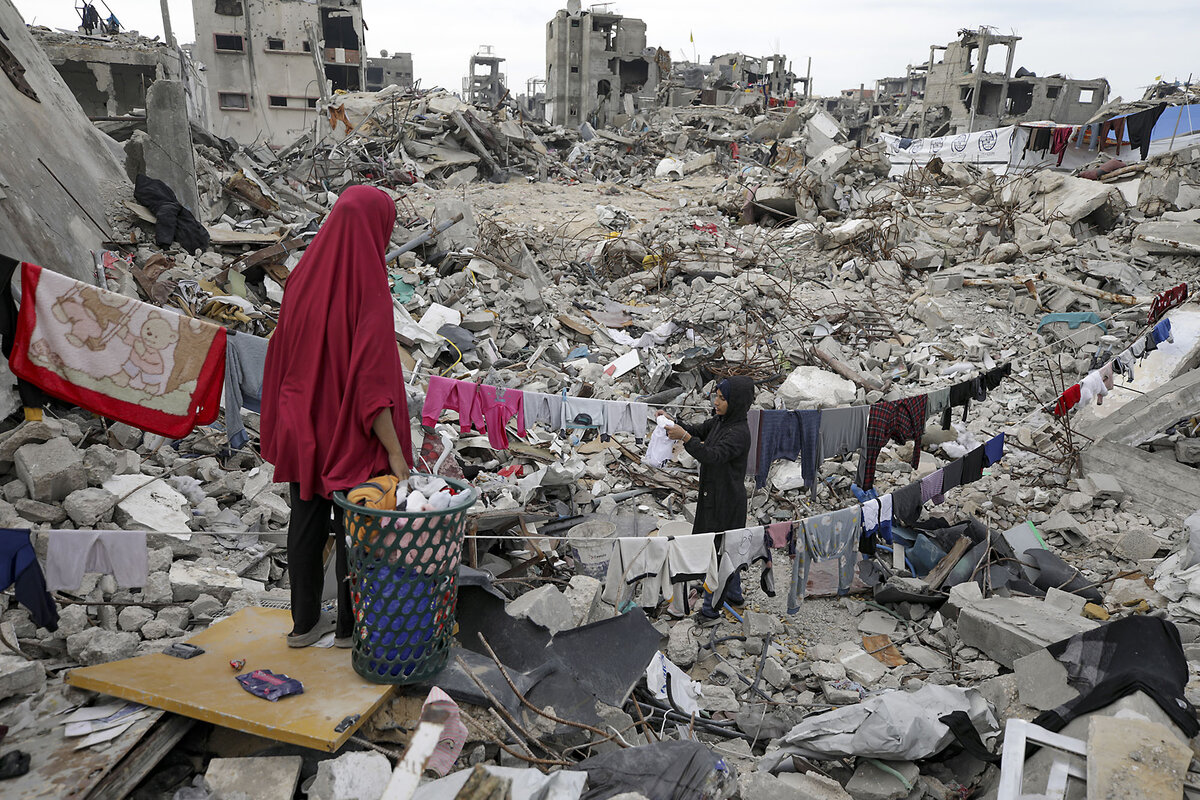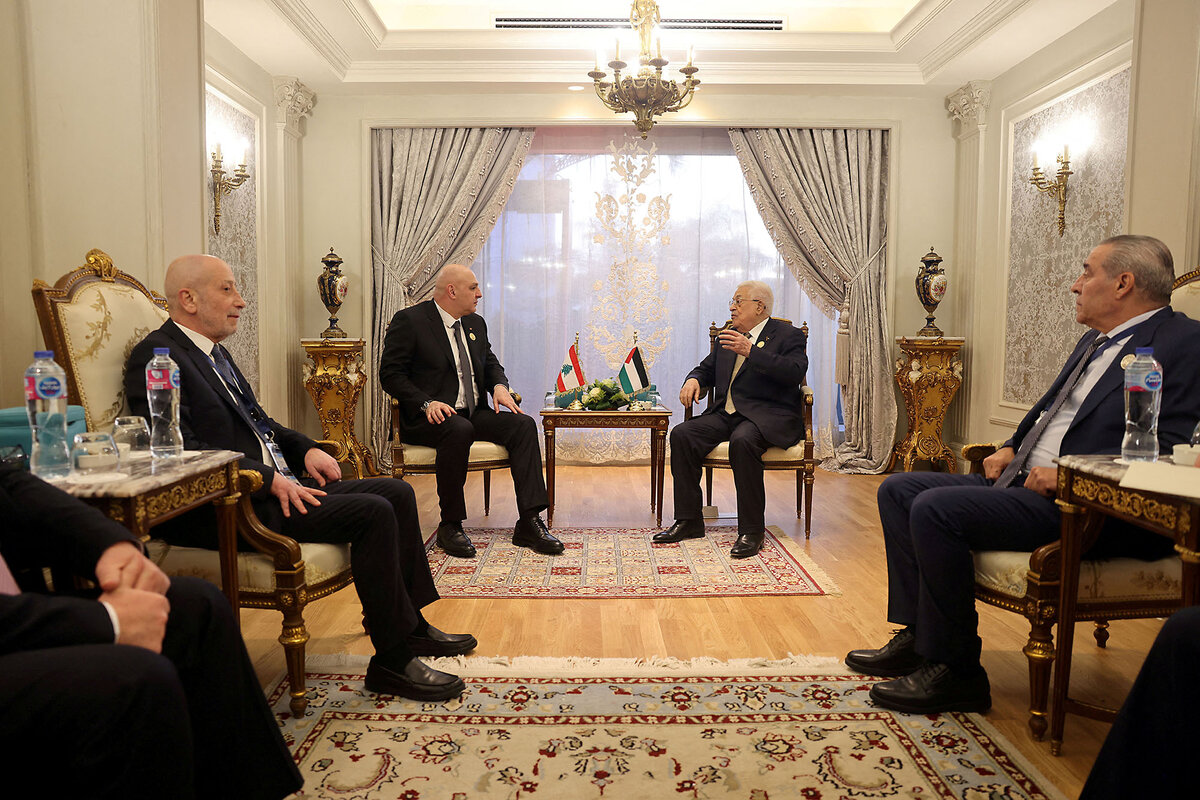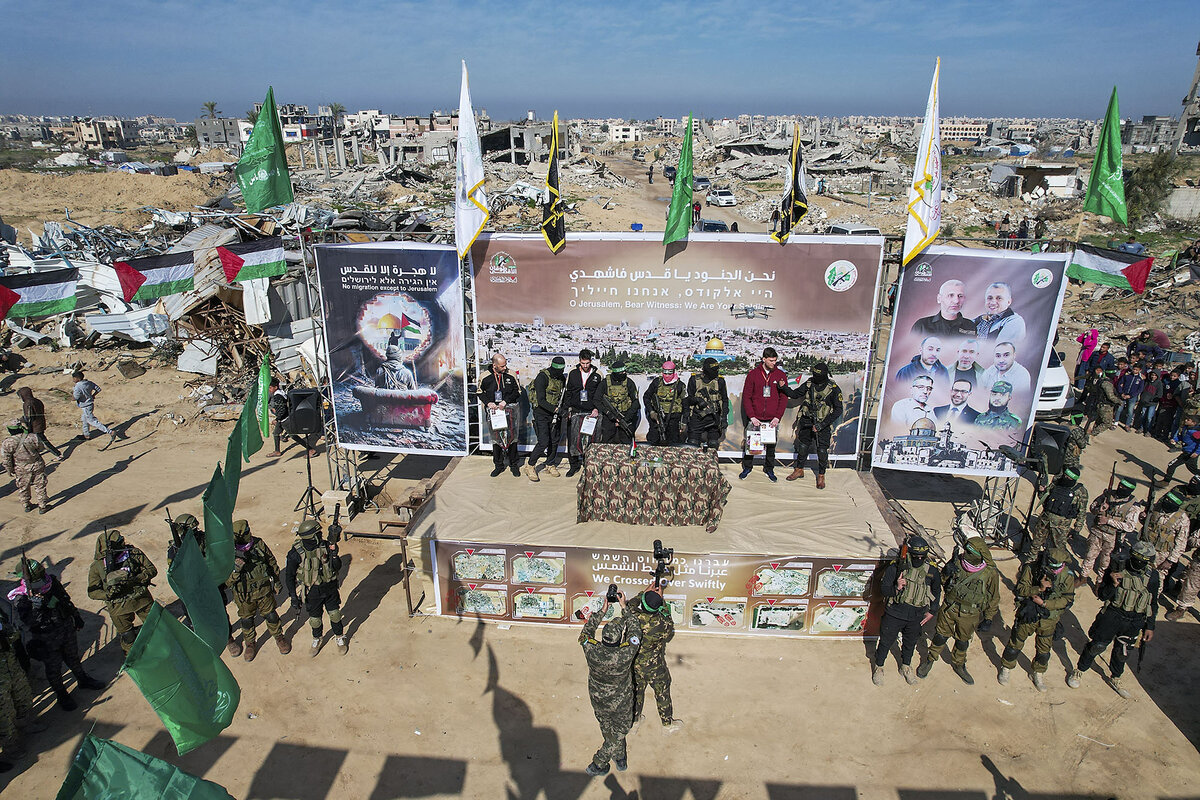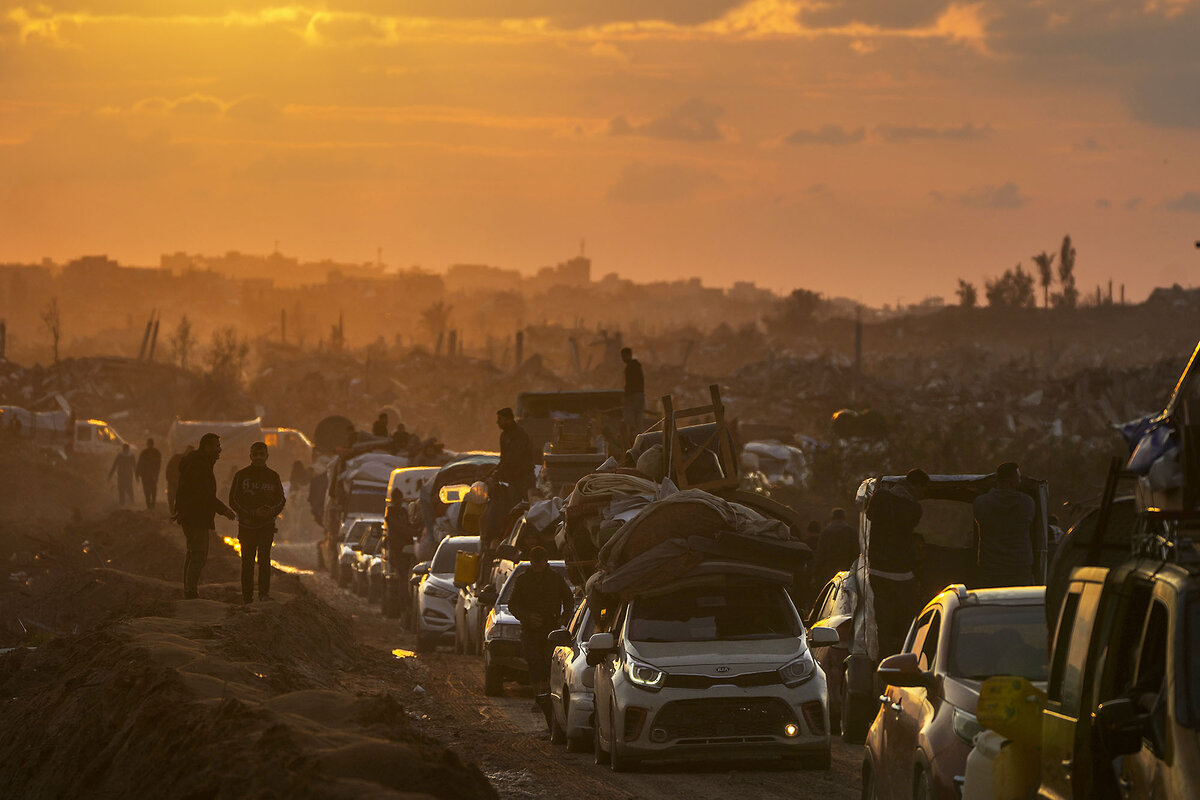Arab world unites on Gaza. Can it get US, Israel, and Hamas on board?
Loading...
| Amman, Jordan; and Gaza City, Gaza Strip
An alternative to U.S. President Donald Trump’s regionally reviled plan for Gaza’s reconstruction is gaining widespread buy-in across the region, and among Palestinians and Europeans. The Arab world’s own plan, dubbed “Gaza 2030,” entails a $53 billion reconstruction program and a new governing entity for the enclave.
The three rather sizable challenges? Getting the United States on board, getting Israel on board, and tackling the thorny outstanding issue of Hamas’ arms.
Yet, despite the steep path ahead, countries are moving forward with the Arab plan, believing they have cards to play with the Trump administration and Israel.
Why We Wrote This
From the outset, the Trump plan for rebuilding Gaza faced fierce resistance over the relocation of its Palestinian residents. A plan that now has broad Arab world backing avoids that, and goes further, setting its sights on regional peace. Still, it faces hurdles.
“There is a convergence among regional and international powers, an agreement that this plan should take place,” says Jawad Anani, a former Jordanian foreign minister and an expert on Arab-Israeli relations.
“Gaza 2030” emerged weeks after President Trump called for the depopulation of the “uninhabitable” Gaza Strip – condemned by many as “ethnic cleansing” – to make way for a “Riviera” project on the Mediterranean.
One main departure from the Trump plan: It allows all 2 million Gaza Palestinians to stay in the strip, rotating among seven zones in tens of thousands of new shelters as the strip is rebuilt. Mr. Trump appeared to walk back his proposal Wednesday, telling reporters that “Nobody is expelling any Palestinians,” yet reports persist his administration is seeking countries willing to take in Gazans.
A five-year plan
Under the plan, formed in Saudi Arabia last month and announced during an extraordinary Arab League summit in Cairo in early March, an independent committee of “technocrats” – apolitical experts – would run Gaza for six months before handing control to the Ramallah, West Bank-based Palestinian Authority (PA).
Over a two-phase, five-year period, Gaza would be cleared of rubble, new housing erected, roads repaved, and electricity, water, and sanitation networks rebuilt.
The Arab plan envisions funding to come from the United Nations, world financial institutions, donor countries, development banks, foreign direct investment, and fundraising by civil society organizations.
Critically, the initiative calls for a blanket truce between the PA and Israel, during which both sides will carry out a series of confidence-building measures and cease unilateral actions, including settlement-building and armed attacks.
The plan envisions initial Israeli-Palestinian talks leading to negotiations over a permanent peace deal, and it calls for the U.N. Security Council to consider sending an international peacekeeping force to Gaza, in order to give security guarantees to Israel.
Egypt and Jordan are “working on training” Palestinian security teams that would be responsible for security in Gaza in the next phase, Egyptian officials say, although it remains unclear who would make up this new security force.
Hamas’ stance
Hamas officials confirmed to the Monitor that Hamas endorses the Egyptian-Arab plan.
“We welcome the plan for the reconstruction of Gaza, which was endorsed by the Arab summit in its final statement, and call for providing all means for its success,” the movement said in an official statement, which speaks of Gaza as “an integral part of the Palestinian state.”
Hamas says it accepts a new governing entity for Gaza and a return of the PA, paving away for elections in which Hamas can compete at the ballot box.
Yet several questions remains, namely the future of Hamas’ armed wing.
Hamas officials have reiterated that the group refuses to disarm, with Hamas leader Sami Abu Zuhri telling Agence France-Presse this month that disarmament is a “red line.” Hamas retaining its arms is a red line for Israel.
Should Hamas retain its armed wing, any incoming security force would not have a complete monopoly of arms in the strip, raising critical questions over Gaza security.
“I think the dynamics of the situation will put pressure on Hamas to accept the fact that they are going to become another civil society or political group that cannot take decisions on its own or on behalf of Gaza,” says Mr. Anani, the former Jordanian diplomat. “The fact that Hamas has already stated they are willing to accept a group of bureaucrats to run the affairs in Gaza is a good beginning. I think we can find a way.”
When reached for comment, multiple current Arab diplomats referred the Monitor back to the plan as the “road map” for going forward, stressing that Arab countries and Palestinian factions are united in support.
At the same time, Arab diplomatic sources refused to comment on Hamas’ future role and the question of its armed wing.
The White House, so far, has rejected the Arab proposal.
National Security Council spokesperson Brian Hughes told reporters the Arab plan did “not address the reality that Gaza is currently uninhabitable and residents cannot humanely live in a territory covered in debris and unexploded ordnance.”
Yet current and former diplomats expressed optimism that the plan allows flexibility for compromise with the Trump administration – and incentives for Israel.
To encourage Israel, Arab diplomatic sources say, Saudi Arabia and Qatar would offer steps toward normalization, Gulf states would provide funding, and Arab and international powers would provide security guarantees.
Arab diplomats currently believe the path toward implementing their Gaza plan is convincing the Trump administration it would be the quickest way to end the war and provide Middle East stability.
Support and concerns in Gaza
On the ground, Gazans expressed both support for the plan and relief that an alternative vision has emerged to the despised Trump plan.
“I believe this reconstruction plan represents a critical opportunity to restore what the Israeli occupation authorities have devastated over the past year and a half,” says Fathy Sabbah, a Gaza journalist and political analyst, noting the support of Arab and Islamic countries.
However, he adds, “I have not seen any concrete commitments from any nation – Arab, Islamic, or otherwise – to finance this reconstruction effort.”
Amjad al-Shawa, head of the Palestinian NGO Network, hails the plan as “a fundamental solution to the impasse we are all facing” that will “strengthen the determination of the people to remain on their land and to accelerate reconstruction.”
“The Palestinian-Egyptian-Arab plan is designed to counter the displacement strategies proposed by the Israeli occupation and Trump’s administration,” he says. “There are no alternative options.”
Palestinian civil society has a vital role in ensuring and monitoring the implementation of this plan, he notes. “The Gaza Strip must be rebuilt by its own people. Engineers should be given the opportunity to lead the reconstruction effort,” he says.
But concerns remain over potential obstacles.
“There are legitimate concerns that Israel may obstruct the reconstruction process, if Hamas remains in power,” says Mr. Sabbah. “It is crucial for Hamas to recognize that its governance in Gaza could deter donor countries from providing support, especially without the approval of Israel and the United States.
“To facilitate reconstruction,” he adds, “Hamas must take steps to demonstrate its commitment to this process.”
Gazans note that the ongoing Israeli siege – with Israel stopping entry of humanitarian aid and cutting off electricity this month, and restrictions on building materials – impedes reconstruction.
“The Israeli occupation may impose unexpected challenges, its interest lies in keeping the Gaza Strip unlivable,” says Mr. Shawa, “but we remain committed to staying on the ground.”







